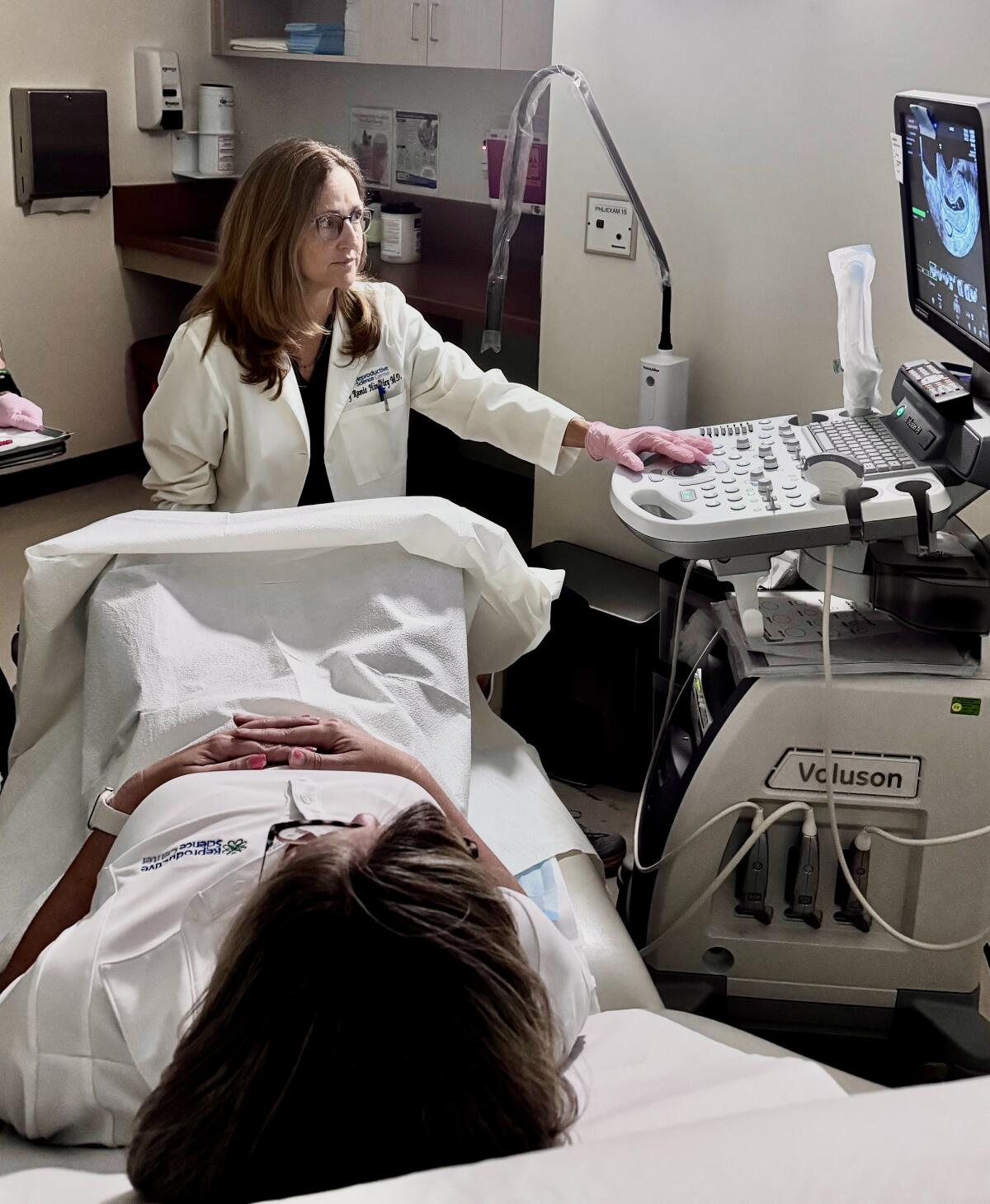-
Connor Zilisch Sends Message To Kyle Larson After NASCAR Xfinity Texas Win - 33 mins ago
-
Dodgers' Freddie Freeman crushes a three-run home run vs. Braves - 37 mins ago
-
Bernie Sanders and AOC Currently ‘in the Lead’ for 2028—Kevin McCarthy - about 1 hour ago
-
Tom Cruise, Ana de Armas step out in London park on actress’s birthday - about 1 hour ago
-
Braves' Ozzie Albies launches a solo home run vs. Dodgers - about 1 hour ago
-
Three Pitchers Red Sox Should Target to Replace Walker Buehler - 2 hours ago
-
Dodgers' Mookie Betts and Freddie Freeman both drive in runs vs. Braves in fourth inning - 2 hours ago
-
SpaceX’s ‘Starbase’ Becomes Official City After Voter Approval - 3 hours ago
-
Inter Miami’s Lionel Messi scores in 4-1 victory over New York - 3 hours ago
-
Cadillac Teases F1 Livery and Race Suits ahead of Miami Grand Prix - 3 hours ago
Bay Area leads the nation when it comes to women over 40 giving birth
When it comes to delaying motherhood to pursue careers and other life aspirations, Bay Area women are leading the nation.
This region is home to the greatest share of women having children at 40 and older — a trend that experts chalk up to a combination of economic opportunity, progressive social norms and access to reproductive technology.
Three of the five U.S. counties with the greatest proportion of women having children in their 40s are in Northern California, according to data recently released from the Centers for Disease Control and Prevention and reported first by the San Francisco Chronicle.
At the top of the list is Marin County, where 11.4% of women who gave birth in 2023 were at least 40 years old. San Francisco came in second place with 10.9%, while San Mateo County ranked fifth with 8.7%.
Los Angeles landed in 15th place at 7.3%. The list includes all counties in the United States with at least 100,000 residents.
Dr. Mary Hinckley, IVF medical director at the Reproductive Science Center of the Bay Area, said she was not surprised to see the region leading the trend of older pregnancies since many women there prioritize careers and other life experiences ahead of starting a family.
The Bay Area embraces modern forms of family structures that may or may not include children and, in general, largely does not foster a culture where women feel traditional societal pressures to start a family young, she said. Around half of her patients at the fertility clinic are at least 38 years old.
“I think there is an entrepreneurial spirit for women out here of just taking charge of their lives, advancing their careers, pursuing more schooling, more life experiences and that causes them to get here later,” she said. “I find so many patients who come to me having hiked Mount Kilimanjaro, surfed in Costa Rica, started a business, switched jobs and now they’re ready to have children.”
The average age of a woman giving birth in San Francisco and Marin counties is 33.6 years and 33.5 years, respectively. Nationally, the average age is 29.6 and in L.A. County it is 31.2.
The proportion of American women giving birth at 40 and older has risen significantly in the last three decades — from 1.3% in 1990 to 4.1% in 2023, according to the CDC.

Dr. Mary Hinckley, an expert in reproductive endocrinology at the Reproductive Science Center of the Bay Area, looks at an ultrasound on May 1, 2025. Hinckley said that around half her clients at the fertility clinic are age 38 and older.
(Reproductive Science Center of the Bay Area)
Hinckley said many Bay Area women may feel more confident delaying motherhood because the region has some of the best fertility clinics in the country, giving women a better chance of having a successful pregnancy at a later age. Clinics can lower the risk of miscarriages among women age 40 from 50% to 10% by conducting genetic tests on embryos created with in vitro fertilization before they are implanted, she said.
Employers have probably also played a role in helping women become new mothers later than past generations.
Bay Area companies offer some of the best coverage in the nation for egg freezing and fertility treatment as an incentive to recruit talented young workers, Hinckley said.
“How do you get these young, smart people to be willing to give away their 20s and even 30s to work all the way into midnight?” she said. “Well, you do that by promising an avenue to be able to preserve their fertility so that they can still have children.”
Other counties that ranked in the top 10 for share of births among women 40 and older were in the metro areas of Washington, D.C., and New York City — both hubs for lucrative and demanding careers.
Women are also acutely aware that their bank accounts are going to take a hit when their little bundle of joy arrives.
In California, the average cost of child care for one infant is $21,945, which takes up 18.4% of a median family’s income, according to an analysis of federal data by the Economic Policy Institute. New parents also shell out for medical costs, diapers, clothing and feeding supplies.
A middle-income family with two children could expect to spend more than $310,000, adjusted for higher future inflation, to raise one child born in 2015 through age 17, according to a 2022 analysis from the Brookings Institution.
Elizabeth Gregory, director of women’s gender and sexuality studies at the University of Houston, interviewed more than 100 women about their choice to delay having kids for a book on later motherhood. One of the most common reasons cited was a desire for greater economic stability and child care.
“It’s not just that they want to have a career, which is part of the story, but also they want their career so they’re earning enough to support their children,” Gregory said. “They just don’t want to be in poverty, which is where a lot of young mothers live.”
A study at the University of Virginia found that for each year a woman waits to start a family, her lifetime earnings increase by 3%.
In Marin and San Francisco counties, the median annual income for a woman with a full-time job is over $100,000 — nearly double the national median income for the same group at $55,240, according to an analysis of U.S. census data by Neilsberg Research.
These higher wages also make it easier for women to afford reproductive technology such as egg freezing and IVF, which can be necessary as fertility declines in their mid to late 30s and 40s.
Later pregnancies have a higher risk of complications such as miscarriage, high blood pressure and chromosomal abnormalities such as Down syndrome. However, modern reproductive technology can mitigate some of these risks.
In addition to economic gain, many women delay motherhood to take advantage of the relatively new opportunity to exert their voice in the workplace.
“There’s a whole dynamic around women needing to get into positions where they can be heard,” Gregory said. “I think they understand that in order to, for instance, get to a world in which child care might be affordable, we need to have more women’s voices in policymaking roles.”
Source link































